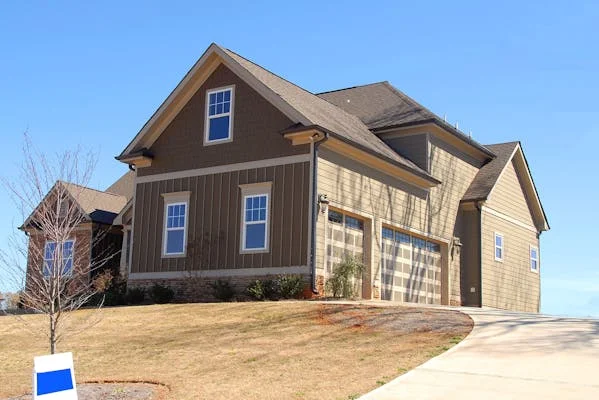Accessory Dwelling Units (ADUs) are growing in popularity in Austin, Texas, as more homeowners look for ways to maximize property value and create additional living spaces. Whether you’re planning to build an ADU for rental income, housing family members, or increasing your property’s utility, financing is a key factor to consider. Understanding current financing rates and options can help you make informed decisions and save money in the long run.
What Are ADUs?
ADUs are small, secondary homes built on the same lot as a primary residence. These units can take various forms, such as:
- Detached ADUs: Separate structures, often referred to as granny flats or backyard cottages.
- Attached ADUs: Extensions connected to the main house.
- Garage conversions: Transforming an existing garage into a livable unit.
- Basement conversions: Utilizing basement space to create an independent living area.
ADUs provide flexibility and potential financial benefits for homeowners. However, the cost of building an ADU can range from $100,000 to $300,000 or more, depending on size, materials, and design. Financing this investment requires careful planning.
Why Financing Rates Matter
Financing rates play a crucial role in determining the total cost of building an ADU. Lower rates mean smaller monthly payments and less interest paid over time. It is essential to explore the various financing options available in Austin to find competitive rates and terms.
Common ADU Financing Options
Here are some of the most common ways to finance an ADU in Austin:
1. Home Equity Loans
A home equity loan allows you to borrow against the equity you’ve built in your primary residence. Key features include:
- Fixed interest rates.
- Lump-sum payment.
- Terms typically ranging from 5 to 20 years.
Pros:
- Predictable monthly payments.
- Lower interest rates compared to unsecured loans.
Cons:
- Risk of losing your home if you default.
2. Home Equity Line of Credit (HELOC)
A HELOC provides a revolving line of credit based on your home’s equity. It functions like a credit card, allowing you to withdraw funds as needed during a draw period (usually 10 years).
Pros:
- Flexible access to funds.
- Interest-only payment options during the draw period.
Cons:
- Variable interest rates can increase costs over time.
3. Construction Loans
Construction loans are short-term loans designed to cover the cost of building or renovating a property. These loans typically convert to a permanent mortgage after construction is complete.
Pros:
- Specifically tailored for building projects.
- Can include funds for both land purchase and construction.
Cons:
- Higher interest rates compared to traditional mortgages.
- Strict qualification requirements.
4. Cash-Out Refinancing
Cash-out refinancing involves replacing your current mortgage with a new one that has a higher balance, allowing you to take out the difference as cash.
Pros:
- Competitive interest rates.
- Consolidates debt into a single payment.
Cons:
- Higher monthly mortgage payments.
- Closing costs can be significant.
5. Personal Loans
Personal loans are unsecured loans that can be used for various purposes, including ADU construction.
Pros:
- No need for home equity.
- Fast approval process.
Cons:
- Higher interest rates.
- Shorter repayment terms.
Current Financing Rates in Austin
The interest rates for ADU financing in austin adu financing rates vary depending on the type of loan, credit score, and lender. Below is an overview of average rates as of 2025:
| Financing Option | Average Interest Rate (APR) | Loan Term |
|---|---|---|
| Home Equity Loan | 6.5% – 8.0% | 5 to 20 years |
| HELOC | 7.0% – 9.0% (variable) | 10-year draw period |
| Construction Loan | 8.0% – 10.0% | 12 to 18 months |
| Cash-Out Refinancing | 5.5% – 7.5% | 15 to 30 years |
| Personal Loan | 10.0% – 15.0% | 1 to 7 years |
Note: Rates are subject to change based on market conditions.
Factors That Influence Financing Rates
Several factors affect the rates you’ll receive for ADU financing:
- Credit Score: Higher scores typically result in lower rates.
- Loan-to-Value Ratio (LTV): Lower LTV ratios are less risky for lenders and may qualify for better rates.
- Debt-to-Income Ratio (DTI): A low DTI ratio signals financial stability.
- Market Conditions: Economic factors, such as the Federal Reserve’s policies, influence overall interest rates.
Tips for Securing the Best Financing Rates
To secure favorable rates for your ADU project, consider the following tips:
- Improve Your Credit Score: Pay down existing debt and avoid late payments.
- Shop Around: Compare offers from multiple lenders.
- Negotiate Terms: Some lenders may be willing to lower rates or waive fees.
- Consider Timing: Lock in rates when the market is favorable.
- Work with Experts: Consult with financial advisors or mortgage brokers.
Additional Costs to Consider
When budgeting for an ADU, it’s important to account for additional expenses beyond construction costs:
- Permits and Fees: Required for construction approval.
- Utilities: Connecting water, electricity, and sewage lines.
- Landscaping: Enhancements to complement the ADU.
- Maintenance: Ongoing upkeep of the unit.
Benefits of Building an ADU in Austin
Despite the financial commitment, ADUs offer several advantages:
- Rental Income: Generate passive income by renting out the unit.
- Increased Property Value: Boost your home’s market appeal.
- Flexibility: Use the unit for guests, family, or personal needs.
- Sustainability: Build eco-friendly units to reduce environmental impact.
Conclusion
Financing an ADU in Austin requires careful consideration of your financial situation and available loan options. By understanding the current rates, terms, and factors influencing costs, you can choose a financing solution that aligns with your goals. Are you ready to take the next step toward building your ADU?
FAQs About Austin ADU Financing
1. What is the average cost of building an ADU in Austin?
The cost typically ranges from $100,000 to $300,000, depending on factors such as size, materials, and design.
2. Can I use a personal loan to finance an ADU?
Yes, personal loans are an option, but they often come with higher interest rates compared to secured loans like home equity loans or HELOCs.
3. What credit score do I need for ADU financing?
Most lenders prefer a credit score of at least 620 for ADU financing, though higher scores may qualify for better rates.
4. Are there grants available for ADU construction in Austin?
Some local and state programs may offer incentives or grants for ADU construction, particularly for affordable housing. Check with local housing authorities for details.
5. How long does it take to secure financing for an ADU?
The timeline varies by lender and loan type but typically ranges from a few weeks to a few months, austin adu financing rates.





